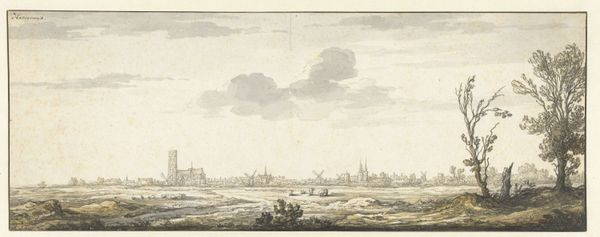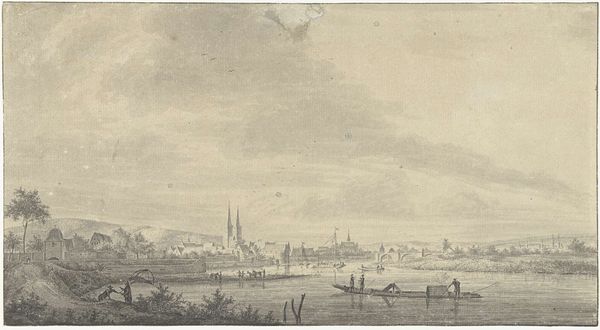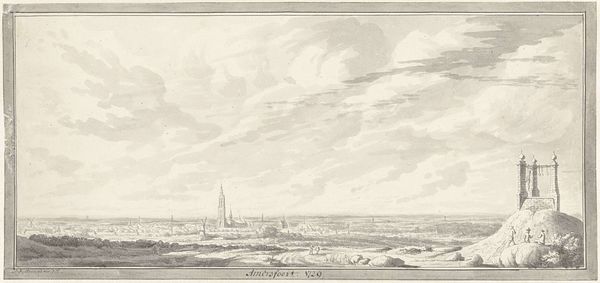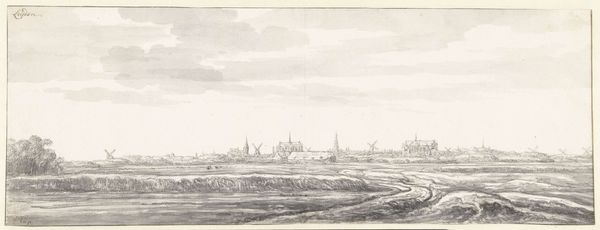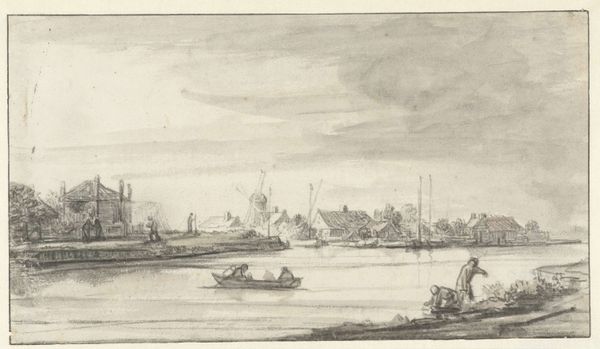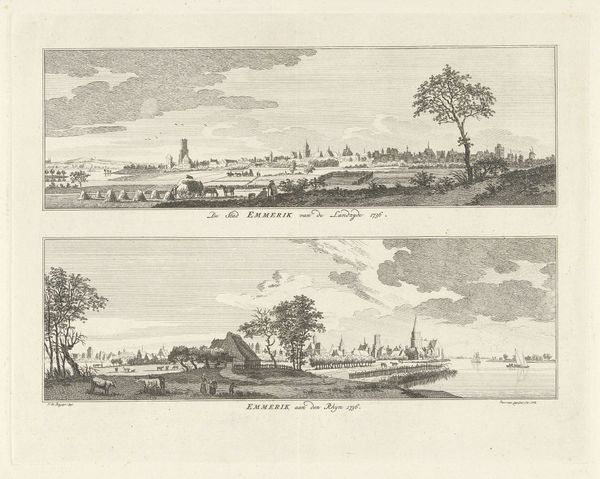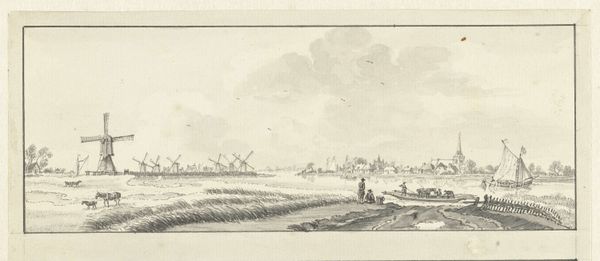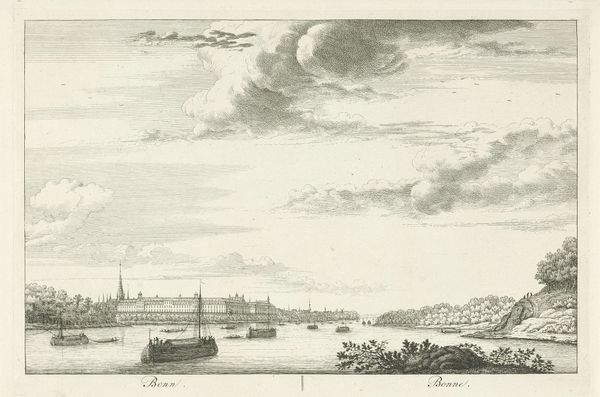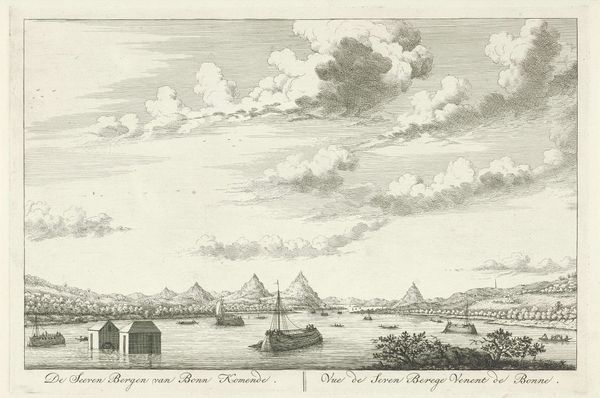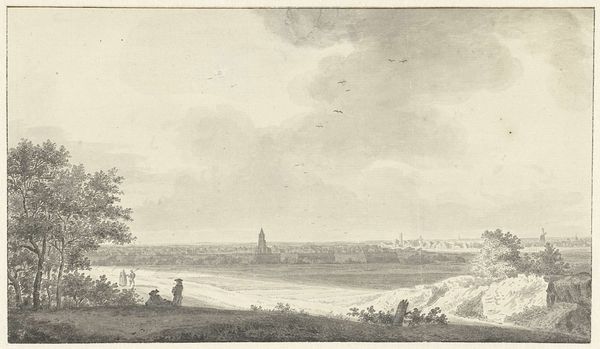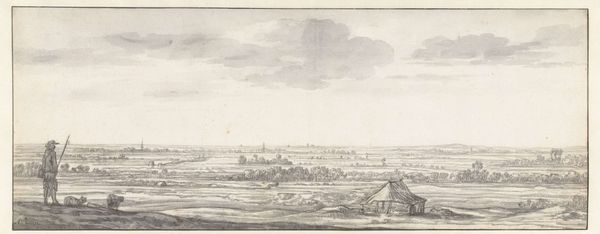
Gezicht over de Lek op de dorpen Lopik, Jaarsveld, Tienhoven, Ameide en het Huis Herlaer 1745
0:00
0:00
#
comic strip sketch
#
quirky sketch
#
old engraving style
#
river
#
personal sketchbook
#
idea generation sketch
#
sketchwork
#
pen-ink sketch
#
sketchbook drawing
#
storyboard and sketchbook work
#
initial sketch
Dimensions: height 73 mm, width 199 mm
Copyright: Rijks Museum: Open Domain
Curator: Looking at this tranquil Dutch landscape, what captures your attention? Editor: It has this quiet stillness about it, almost melancholy. The limited color palette adds to that sense of distance, both physical and emotional. Is it a political commentary, perhaps a critique of the ruling class's detachment? Curator: Well, this is "View over the Lek River to the villages of Lopik, Jaarsveld, Tienhoven, Ameide and the Herlaer House" by Jan de Beijer, created around 1745. De Beijer was primarily a topographical artist, so his work served more as a visual record of the Dutch landscape than a direct political statement. His art became almost like a visual public service. Editor: A visual public service? It’s interesting you mention that. How accessible would an image like this be to the working class during that period? Were these vistas intended for public consumption, or more as displays of wealth for a privileged audience who might acquire such drawings? It's easy to view windmills romantically, forgetting the hard work behind the scenes. Curator: That’s a fair point. While the original drawing may have been seen by a limited audience, prints made from drawings like this had a broader reach. The Dutch Republic was, after all, a commercial society highly interested in its own image and accomplishments, and art certainly played a role in shaping national identity. Editor: I see your point. So, the detailed depiction of villages along the Lek River wasn't just about capturing scenery but reinforcing this burgeoning national pride? Did his style contribute to the accessibility, I find it a bit cartoonish even if detailed, to an extent. Curator: Precisely! The attention to detail – the church spires, windmills, and even the figures in the boats - speaks to the importance of civic and economic activity in constructing that identity. In terms of style, his approach of course made it much more accessible to viewers, by appealing to them. Editor: It gives me much more to consider. This isn't just about a pleasant view, but about solidifying cultural identity in 18th century Netherlands, which I wasn’t aware of. It provides an entirely new lens through which we can examine how collective identities were formed through this artistic medium. Curator: Indeed. Art, especially landscapes, weren't passive records but active participants in shaping the viewer's understanding of the world around them, and the world they aimed for. Editor: Thank you for sharing all of these perspectives. It has given me new insights to consider on identity and representation.
Comments
No comments
Be the first to comment and join the conversation on the ultimate creative platform.

